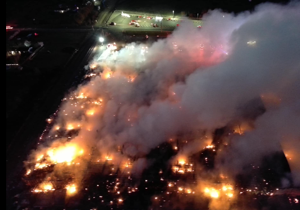
PASCO, Wash. — Several organizations are recognizing the historical relevance of Pasco’s Kurtzman Park this Black History Month, including the City of Pasco, the Franklin County Historical Society & Museum and the National Park Service.
In the 1940s, the Black population in Tri-Cities had grown exponentially due to the demand for workers at the Hanford site. At this time, several policies were in place that isolated the living space of Black Tri-Citians to only East Pasco. Kennewick was a sundown town, allowing for brutal violence against any Black people in town after sunset. Redlining made it nearly impossible for communities to move elsewhere, according to families who grew up in East Pasco.
East Pasco was separated from the rest of Tri-Cities by railroad tracks, according to NPS. This barrier kept Black families from many community services, including access to parks. It is reported that local kids cleared the way for a baseball diamond on their own at the current Kurtzman Park.
“In the 1950s, local children created a baseball diamond in the field that became Kurtzman Park, clearing tumbleweeds, filling holes, and wiring in a backstop,” said NPS. “Rebecca Heidlebaugh, a White attorney and civil rights champion, assisted a group of boys who successfully sought the donation of a 6 acre (2 hectare) tract of land to transform into a park.”
The Daniels family in Pasco helped build Kurtzman Park. It featured a community center because Black people weren’t allowed at any other community center in Tri-Cities. The Kurtzman Park Youth Center offered a library, tutoring programs and activities for youth, as well as a place for community meetings. Its first manager was Virgie Robinson, who the nearby elementary school is named after.



